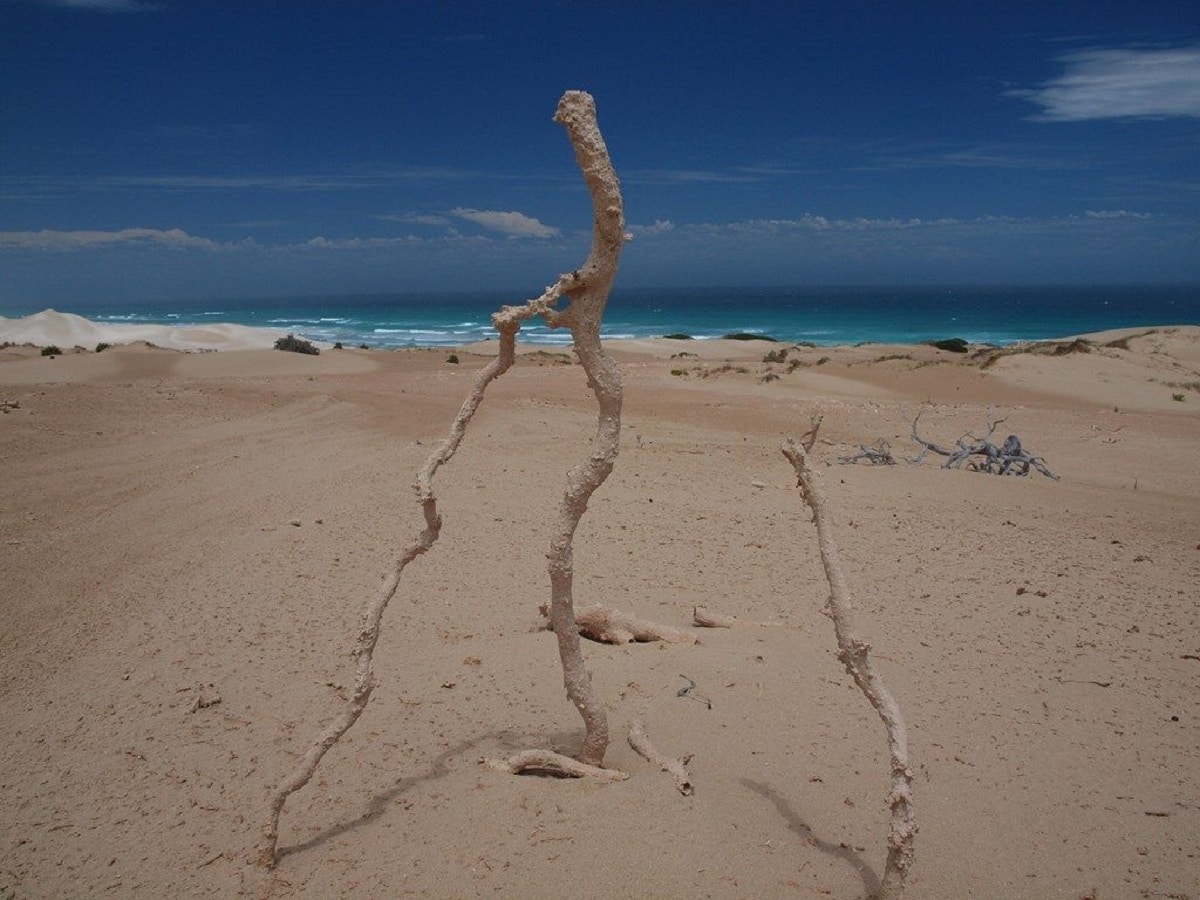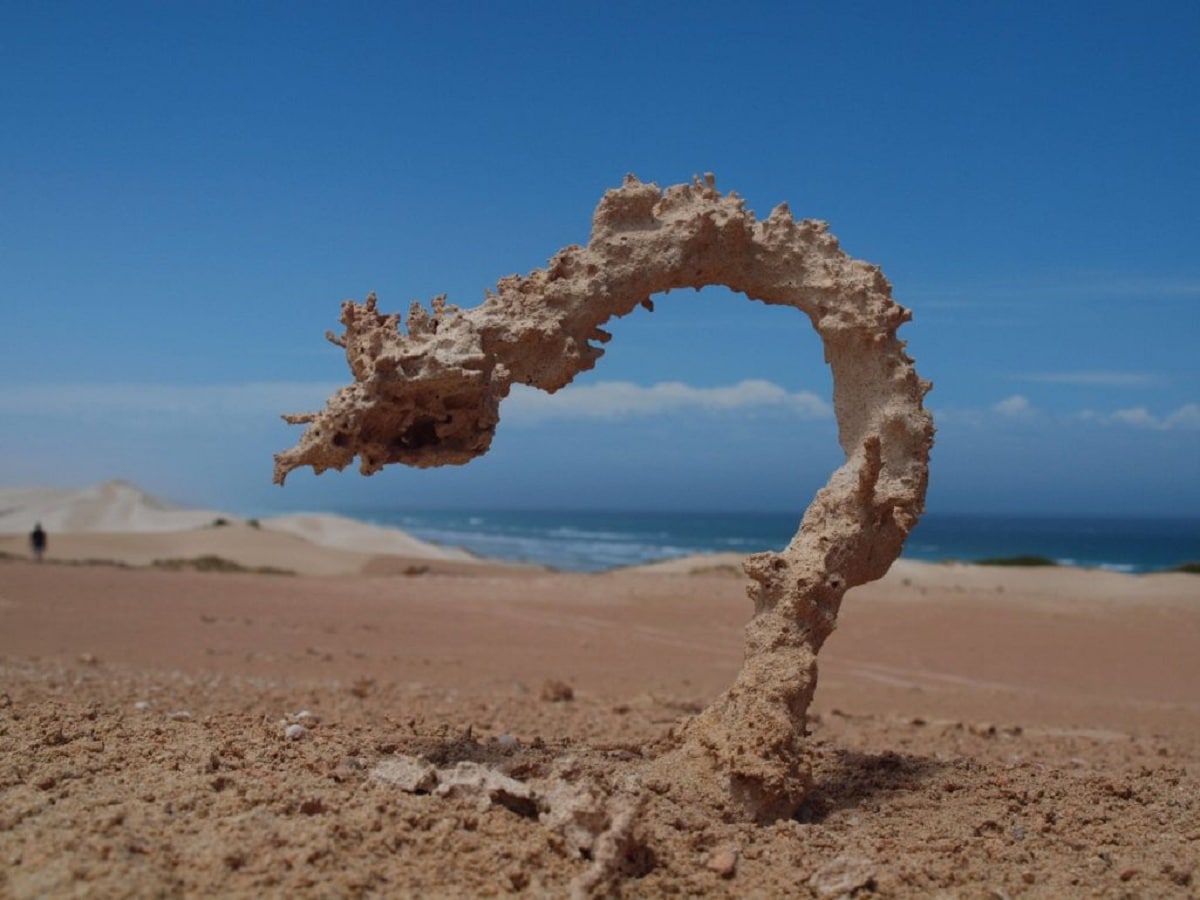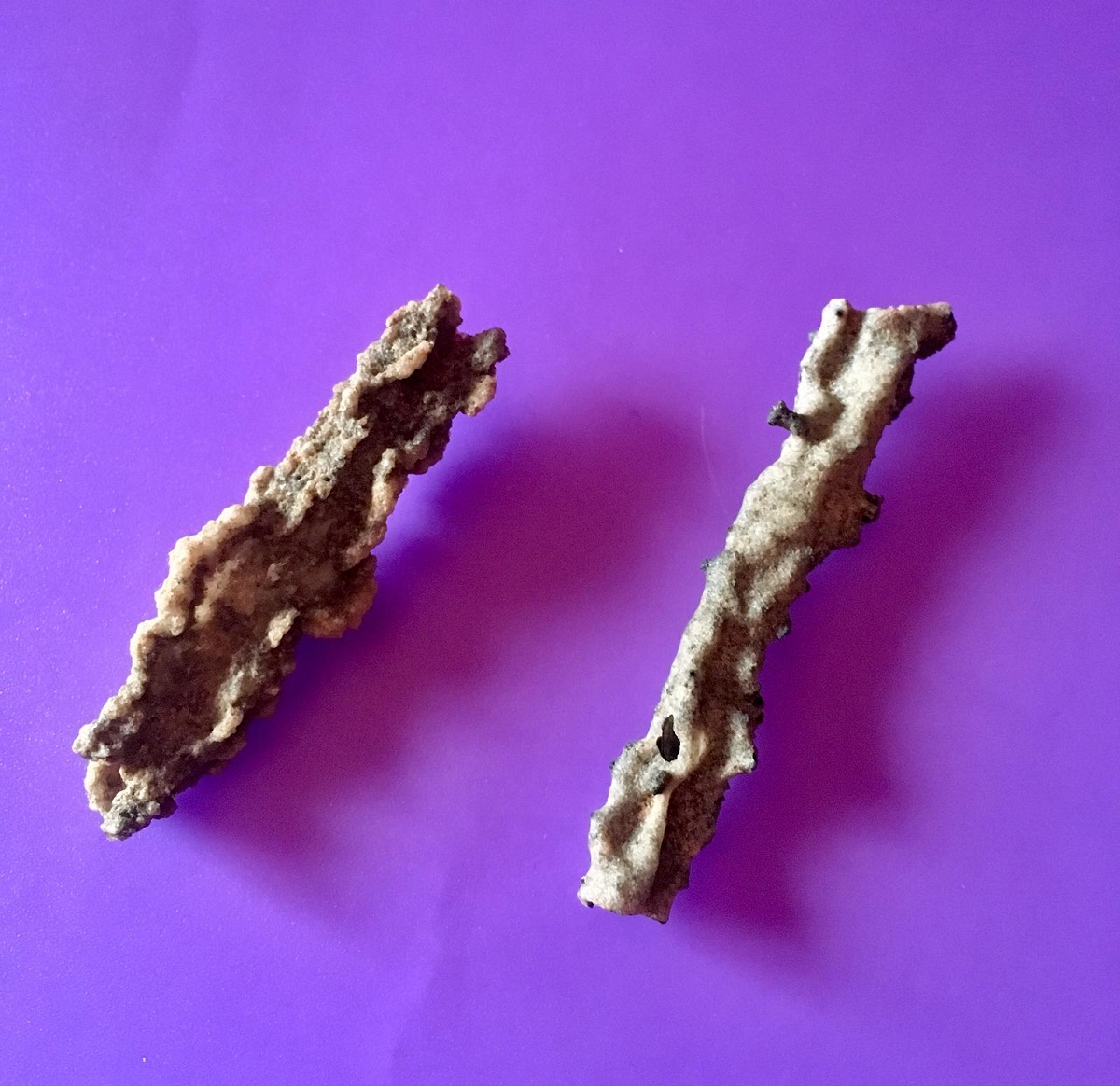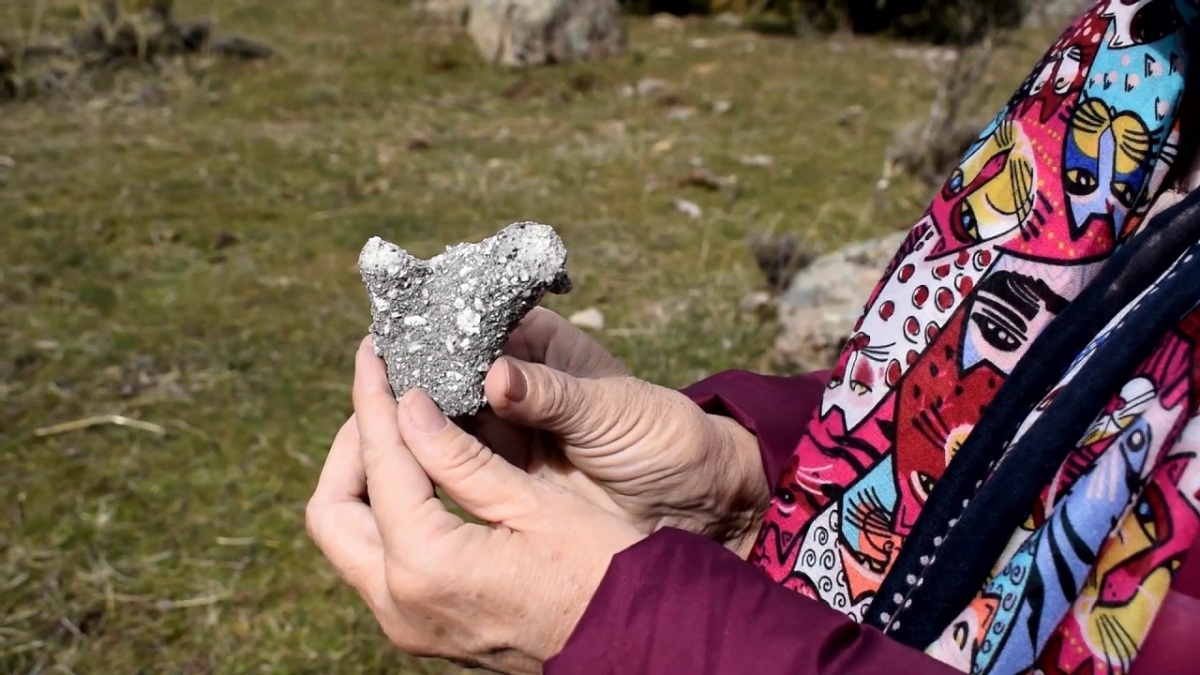
One of the doubts is whether the fulgurite it is a mineral or a rock. We are talking about a mineraloid that is formed by the impact of lightning and its structure is evidence of the shape of this atmospheric phenomenon. Fulgurite is quite well known and belongs to a variety of mineraloids known as lechatelierite.
In this article we are going to tell you about all the characteristics, origin and properties of fulgurite.
Key features
We mentioned that it is a A mineraloid that has been formed by a lightning strike. The fact that a kind of mineral is formed by a lightning strike is impressive enough to investigate further. However, as we investigate, we discover just how amazing this mineraloid is. The name of fulgurite comes from the word fulgur, which in Latin means lightning. They may belong to a valid mineraloid known by the name of lechatelierite. They are amorphous structures with a high content of silicon oxide. For a mineraloid to be considered within this group, they must be almost exclusively formed by silica.
There is another type of fulgurite that is made up of other materials. Some of them have been formed in clay soils and other types of rocks that belong to the metamorphic group.
Properties of fulgurite

This mineraloid is mainly made up of siliceous sand. The chemical composition can vary depending on the geological environment where it has been formed. It also depends on the region of the world where the lightning has struck. Many of the fulgurites can contain less amounts of aluminum oxide, titanium, etc. They should be made up mostly of silica oxide. For example, one of the reasons why some fulgurites have shades between brown and green is roe deer that is contained in iron oxide.
There is a wide range of colors and you can have this mineraloid ranging from white, through yellowish to black. The structures that fulgurite possesses can become brittle. If we analyze the appearance of fulgurite, we see that it is rough and has shapes similar to the roots of a tree. Most of the roots have a cylindrical shape.
Formation of fulgurite
As we mentioned before, the origin of this mineraloid come from a lightning strike. From these powerful atmospheric electrical discharges, this type of mineraloid can be formed. So that a fulguritas It takes at least 1600-2000 degrees of temperature to form. Scientists estimate that the energy potential of lightning varies between 1-30 megajoules per meter.
At the moment of lightning strike we know that it travels across the ground. It is at that moment when it melts and causes the fusion of the soil material. There is a composition rich in sand or clay that can melt from lightning. In this way, branched structures in the form of tubes are generated that They can measure from a couple of centimeters to 15 meters in length.
In many specimens evidence of a narrow opening of molten glass can be left on the interior walls. Externally, we can only observe a rough texture formed by sand granules and small rocks. The surprising interior shape occurs when we analyze fulgurite through an electron microscope.
According to the composition and morphology, fulgurite can be classified into several types:
- Sand fulgurite: It is the one that is generated when the lightning strike falls on soils that have a sandy texture.
- Clay Fulgurite: it is usually formed when the lightning strike occurs in soils with abundant amounts of clay and generates another type of structure in this mineraloid.
- Calcium sediment: It is another variety that has a large amount of calcium in the form of precipitated sediments.
- Rock fulgurite: it usually forms on other rocks and one in both structures. They are usually somewhat larger in size and have a higher hardness.
- Exogenous fulgurites: they can be spherical or drop-shaped.
Reservoirs and uses
At the beginning of the article we mentioned that this mineraloid can be found all over the world. We know that every day thousands of lightning strikes the earth's surface. Although specifically in the city we live in, no lightning strikes, they usually fall in natural spaces that are not so inhabited. In order for lightning to strike the surface, there must be some suitable conditions for it.
The favorite places to look for the deposits of this mineraloid are the deserts, coastal dunes and even in the mountains. In the American continent more lightning strikes, so there are some notable deposits of fulgurite. They have been found in Maldonado beaches, Atacama desert, Sonora desert and in the states of Utah, Arizona and Michigan. One of the most famous fulgurite sources in the world is the Sahara desert, located on the continent of Africa.
As you might expect, humans put these formations to use. Applications are clearly important in the entire area of science. And, thanks to this training, it is possible to reconstruct the behavior of the prehistoric climate in certain regions. With the use of this mineraloid, it is possible to get to know the environmental conditions present in a certain region thousands of years ago. This part becomes essential if we want to understand climate change.
Of course, it was to be expected that humans have managed to have Fulgurite from artificial means. Attention to it can be dangerous, since it is necessary to use an electric arc that has high voltages. If not done properly it can be very dangerous. We are talking about working with lightning. This is the reason why fulgurite tends to have a higher price artificially than naturally.
I hope that with this information you can learn more about fulgurite and its characteristics.

